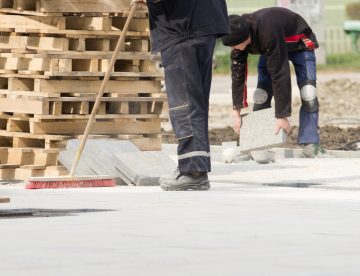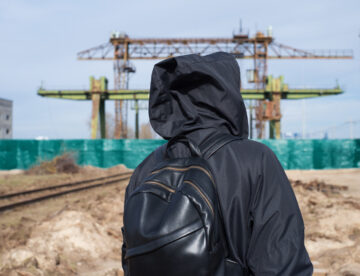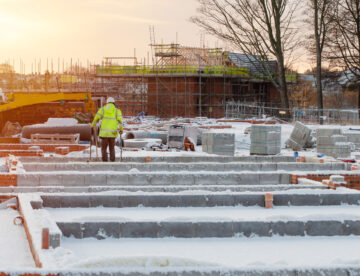
While cleaning up might seem like a secondary concern on a bustling construction site, taking the time to remove scrap materials, dispose of debris properly and store tools securely is crucial. These practices aren’t just about keeping things tidy; they’re essential for preventing accidents, injuries and environmental hazards.
In many cases, incidents involving slips, trips and falls could have been prevented if the site had simply followed better housekeeping practices. Take note of some top tips in this week’s blog.

We’re living in a time when many of our roads, bridges and buildings are getting old and showing signs of wear. It’s like they’re all getting sick at the same time, making it impossible for inspectors to keep up with the job of checking out every crack, creak or crumble. This is a big problem, because if problems are not caught early, they can deteriorate and even lead to dangerous failures.
Here’s where some clever minds at Drexel University in the US come in. Read this week’s blog to find out more about how they’ve developed a system that uses robots and artificial intelligence (AI) to help with the inspections.

Toolbox Talks have long been a staple part of a construction team’s day, but are they truly effective? Are your crew members simply going through the motions or are they actively listening, learning and improving?
In this week’s blog, we’re sharing five simple techniques you can use to boost the engagement, understanding and impact of your next Toolbox Talk, thereby driving safer and more skillful work

While construction has long been known for its focus on hard work and technical expertise, research suggests that one of the key strengths of our industry comes from it having embraced a broader range of thinking styles and experiences beyond the ‘typical’.
A new study by the Association for Project Management (APM) has revealed that almost half (46%) of construction professionals identify as neurodivergent, compared to a cross-sector average of 31%. Read on to find out more about what this means and the potential benefits this offers for our industry.

With crimes like theft and trespass already costing the construction industry a staggering £800 million per year, it now seems that things are getting worse.
According to a survey carried out by site security firm, BauWatch, 60% of construction professionals in the UK have seen crime on energy, infrastructure and commercial construction projects worsen over the past year. Read this week’s blog for more of the survey results and some ideas about how to mitigate the risks by maintaining good security.

Back in November last year, we reported on a free masterclass for bricklayers that was being offered by the Home Builders Federation (HBF) and how an equivalent opportunity would soon be made available for roofers.
This month, the HBF have released that opportunity so, if improving your roofing skills is on your ‘to do’ list, read on.

After a few chilly early mornings and, as we’re likely heading into the coldest months of the year, it’s time once again for the construction industry to brace itself against the full impact of winter.
Working outdoors in rain, snow, ice, fog or wind can be harsh, however there are practical solutions which can help ensure such work is carried out productively and that every site worker stays safe and healthy. Take just a few minutes out of your day to read this week’s blog, where we’re sharing three strategies for weatherproofing the construction site.

The John Lewis advert has hit the screens, supermarket shelves are starting to fill up with Christmas goodies and probably somewhere there’s a radio station already adding Mariah Carey into their playlist.
While the festive season brings joy to many, there is a darker side which sees some people falling into debt as they join in with the ‘spend, spend, spend’ ethos that will be pushed at us over weeks ahead. Businesses are not immune to this either and can, in fact, stumble into overspending habits at any time of the year. With this in mind, our blog this week focuses on some simple ideas for avoiding overspending.


